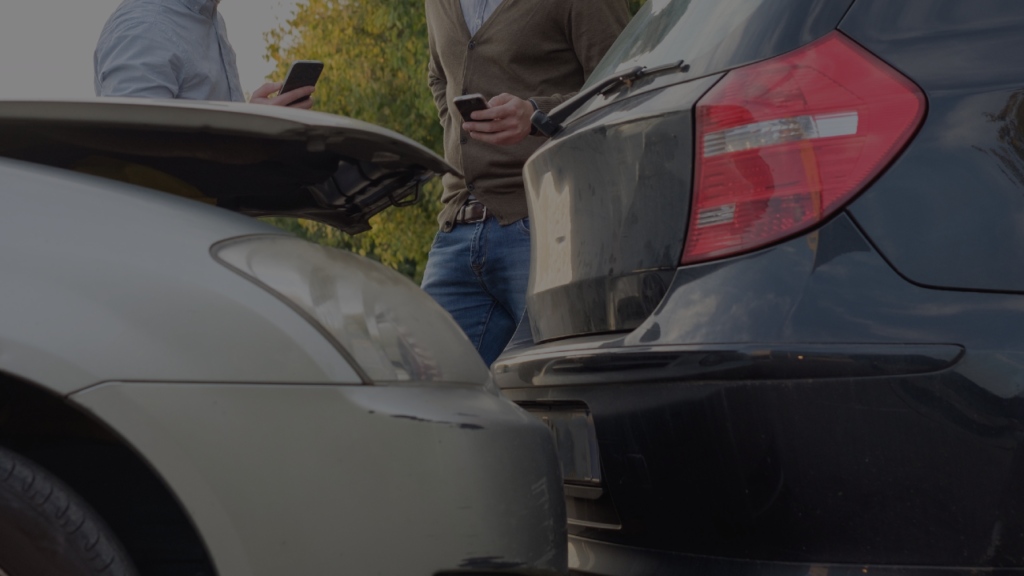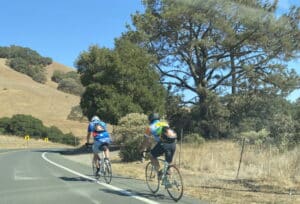Written By Christopher Dolan and Jeremy Jessup
This week’s question comes from M. from Daly City who asks: I recently received a call from my son, saying he was involved in an “accident.” Luckily, he is fine. He went on to say that the other driver was looking down at their phone, not paying attention and rear-ended him. I always thought of “accidents” as being unavoidable; this seems like the driver could have avoided it. Was it really an accident?
Dear M.,
I am glad to read that your son is fine, and that is the most important thing. But you are correct. Over the years, we as a society seem to have found a way to excuse peoples’ negligence by classifying them as an “accident.” Using a cell phone while driving creates the potential for deaths and injuries on California and U.S. roads. The underlying thought is that “they didn’t mean for it to happen,” so it was an “accident.” As a society, we need to get away from alleviating someone’s fault by classifying their actions as a an “accident” and look more closely at the underlying conditions.
Accident has two meanings:
- an unfortunate incident that happens unexpectedly and unintentionally, resulting in harm, and
- an event that happens by chance.
In the situation involving your son, people would say that the first definition would apply to the driver that caused the collision; but let’s think about that. The cause of the crash was an inattentive driver who was intentionally using their phone and not paying attention. Though they may not have intentionally struck your son’s vehicle, everything else leading up to that was intentional. Therefore, the outcome should not have been unexpected. Why would we consider this to be an accident?
Secondly, accidents are supposed to happen by chance or be random. But studies are finding this not to be the case.
In a recent interview with Marin Cogan, Jessie Singer, author of the new book There Are No Accidents, talks about the term “accident” and explains “[t]here are a lot of problems with it. Accidents are supposed to be random, right? And unpredictable. If that were true, then accidental death would be randomly distributed across the country, but it’s not. When we look at the data, we see that Black and Indigenous people and people living in poverty die by accident most often.”
The Governors Highway Safety Association proved this statement to be true. They published an Analysis of Traffic Fatalities by Race and Ethnicity in June of 2021. In that analysis, several studies were reviewed and cited to, some of which were:
- Motor Vehicle Traffic-Related Pedestrian Deaths – U.S., 2001–2010 (Naumann and Beck, 2013), wherein the Centers for Disease Control and Prevention (CDC), which analyzed 2001–2010 data from the National Vital Statistics System (NVSS).
- Socioeconomic Differences in Road Traffic Injuries During Childhood and Youth: A Closer Look at Different Kinds of Road Users (Hasselberg, et al, 2001) a Swedish Study.
- Vision Zero Chicago: Action Plan 2017-2019 (City of Chicago, 2017) and
- 2015-2019 Fatality Analysis Reporting System (FARS data).
They found that Blacks, Indigenous and People of Color are disproportionately represented in fatal traffic crashes. Key findings from the research indicated that:
- When measured against all causes of death, motor vehicle traffic crashes account for disproportionately large percentages of fatalities, particularly among Native American and Hispanic persons.
- Black children ages 4–15 had the highest fatalities involving pedestrians and other people not in vehicles as a percentage of all motor vehicle traffic fatalities.
- American Indian/Alaskan Native persons have the highest annualized, age-adjusted traffic-related pedestrian death rates of all races/ethnicities.
- Census tracts where low-income and minority populations are more concentrated have measurably higher levels of vehicle traffic and higher speed arterials.
- A Swedish study found the injury risk for pedestrians and bicyclists was 20% to 30% higher among the children of manual workers than those of intermediate and high-level salaried employees, indicating socioeconomic status can influence the risk of motor vehicle crash involvement.
Beyond race, socioeconomic status can influence the risk of motor vehicle crash involvement. The City of Chicago’s 2017 Vision Zero Action Plan included a reference to public health data that show traffic crashes affect Chicago communities unequally. Chicagoans who live in areas of high economic hardship have an increased risk of being in a severe crash and die in traffic crashes more often and at a higher rate than other city residents.
The key findings from the analysis of 2015-2019 FARS data:
- Compared with all other racial groups, American Indian/Alaskan Native persons had a substantially higher per-capita rate of total traffic fatalities.
- Black persons had the second-highest rate of total traffic deaths. This rate was true for total traffic deaths, pedestrian traffic deaths and bicyclist traffic deaths.
When interpreting the disproportionate representation of race and ethnicity in motor vehicle crashes and traffic fatalities, we must recognize that ethnicity and race, to a certain degree, are intertwined with other factors that affect crash risk. Risks include as socioeconomic status and overall investments in crash prevention where people live. These investments include roadway infrastructure, traffic enforcement, community engagement and traffic safety education. None of which is random nor unexpected.
At the end of the day, as Jessie Singer has indicated, “[w]hen we say “it was an accident,” we’re saying it wasn’t my fault. It wasn’t their fault. In doing that, we’re almost always focusing on the wrong thing and setting up the same accident to happen again.”
We as a society need to start focusing on right thing; we can start by not calling everything an accident.









